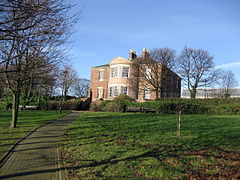
Bede, also known as Saint Bede, The Venerable Bede, and Bede the Venerable, was an English Benedictine monk at the monastery of St. Peter and its companion monastery of St. Paul in the Kingdom of Northumbria of the Angles.
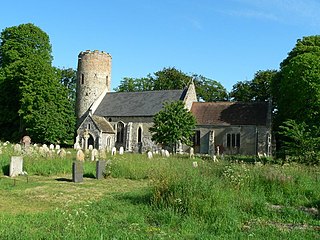
Burgh Castle is a village and civil parish in the English county of Norfolk. It is situated on the east bank of the River Waveney, some 3.7 miles (6.0 km) west of Great Yarmouth and within the Norfolk Broads National Park. The parish was part of Suffolk until 1974.

Tyne and Wear is a metropolitan county in North East England, situated around the mouths of the rivers Tyne and Wear. It came into existence in 1974 after the passage of the Local Government Act 1972. It consists of five metropolitan boroughs - Newcastle upon Tyne, Gateshead, North Tyneside, South Tyneside and the City of Sunderland. The county is bordered to the north by Northumberland, to the south by County Durham and to the east of the county lies the North Sea. It is the smallest county in North East England by area, but by far the largest in terms of population.

Benedict Biscop, also known as Biscop Baducing, was an Anglo-Saxon abbot and founder of Monkwearmouth-Jarrow Priory and was considered a saint after his death.
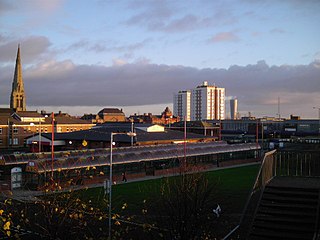
Jarrow is a town within the metropolitan borough of South Tyneside, a part of the metropolitan county of Tyne and Wear in North East England. Historically in County Durham, it is situated by the River Tyne and is home to the southern entrance / exit of the Tyne Tunnel.

South Tyneside is a metropolitan borough in the metropolitan county of Tyne and Wear, North East England. It forms part of the Tyneside conurbation.

Yeadon is a town within the metropolitan borough of the City of Leeds, West Yorkshire, England.

Jarrow Hall is a museum in Jarrow, South Tyneside, England which celebrates the life of the Venerable Bede; a monk, author and scholar who lived in at the Abbey Church of Saint Peter and Saint Paul, Wearmouth-Jarrow, a double monastery at Jarrow and Monkwearmouth,, England.

Saint Ceolfrid was an Anglo-Saxon Christian abbot and saint. He is best known as the warden of Bede from the age of seven until his death in 716. He was the Abbot of Monkwearmouth-Jarrow Abbey, and a major contributor to the project to produce the Codex Amiatinus Bible. He died in Burgundy while en route to deliver a copy of the codex to Pope Gregory II in Rome.

Northenden is a suburb of Manchester, England, with a population of 14,771 at the 2011 census. It lies on the south side of the River Mersey, 4.2 miles (6.8 km) west of Stockport and 5.2 miles (8.4 km) south of Manchester city centre, bounded by Didsbury to the north, Gatley to the east, and Wythenshawe to the south and west.

Coldingham is a village and parish in Berwickshire, Scottish Borders, on Scotland's southeast coastline, north of Eyemouth.

Standish is a village in the Metropolitan Borough of Wigan, Greater Manchester, England. Within the boundaries of the historic county of Lancashire, it is on the A49 road between Chorley and Wigan, near Junction 27 of the M6 motorway. The population of the village was 13,278 in the 2011 census.
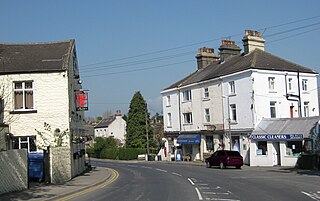
Shadwell is a village and civil parish in north-east Leeds, West Yorkshire, England. The village is 6 miles (9.7 km) to the north east of Leeds city centre.

Goldsborough is a village and civil parish in the Harrogate district of North Yorkshire, England. It is situated near the River Nidd and one mile (1.6 km) east of Knaresborough. Goldsborough is recognised by the well-known stately home Goldsborough Hall and its other features including: Goldsborough Primary School, the Bay Horse Inn and the Goldsborough Cricket Grounds.

St Peter's Church, Monkwearmouth is the parish church of Monkwearmouth in Sunderland, Tyne and Wear, England. It is one of three churches in the Parish of Monkwearmouth. The others are All Saints' Church, Monkwearmouth and St Andrew's Church, Roker.
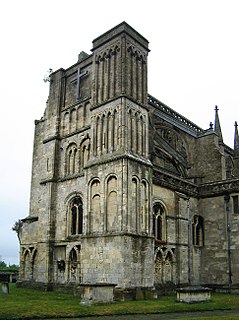
Malmesbury is a town and civil parish in Wiltshire, England. As a market town it became prominent in the Middle Ages as a centre for learning focused on and around Malmesbury Abbey, the bulk of which forms a rare survival of the dissolution of the monasteries. Once the site of an Iron Age fort, in the Anglo-Saxon period it became the site of a monastery famed for its learning and one of Alfred the Great's fortified burhs for defence against the Vikings. Æthelstan, the first king of all England, was buried in Malmesbury Abbey when he died in 939.

The Abbey Church of Saint Peter and Saint Paul, Monkwearmouth–Jarrow, known simply as Monkwearmouth–Jarrow Abbey, was a Benedictine double monastery in the Kingdom of Northumbria, England.
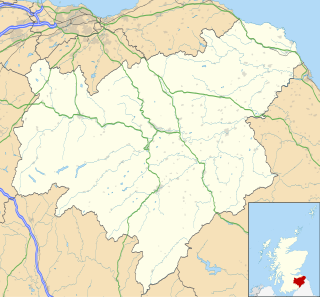
Yarrow is a place and parish in the Scottish Borders area of Scotland and in the former county of Selkirkshire.The name "Yarrow" may derive from the Celtic word garw meaning "rough" or possibly share a derivation with the English name "Jarrow".

North and South Wheatley is a civil parish in the Bassetlaw district, in the county of Nottinghamshire, England. The parish includes the villages of North Wheatley and South Wheatley. In 2011 North Wheatley parish had a population of 509. It is 130 miles north of London, 30 miles north east of the county town of Nottingham, and 5 miles north east of the Nottinghamshire town of Retford. The parish touches Bole, Clarborough and Welham, Clayworth, Hayton, Saundby, Sturton Le Steeple and West Burton. There are 18 listed buildings in North and South Wheatley.

St Paul's Church, Jarrow, is a Church of England parish church in the Parish of Jarrow and Simonside. It was founded in AD681 as a part of the Monkwearmouth–Jarrow Abbey. Most of the church is later but the chancel, is the remains of a free-standing chapel, of the monastery. On an inner wall of the tower is a dedication stone dating to 23 April AD 685 making this one of, if not, the oldest church dedication stone in England. It is dedicated to St Paul on 15th year of King Ecgfrith and in the 4th year of the Abbot Ceolfrith. The remains and markers for some of the later (medieval) abbey can be found in the church ground. The nave and the north aisle were built by Sir George Gilbert Scott. There is, in addition to a few pieces of old, including a few pieces of Anglo-Saxon stained glass, a more modern window by John Piper (1903-92).The church also has on display Bede’s Chair.
